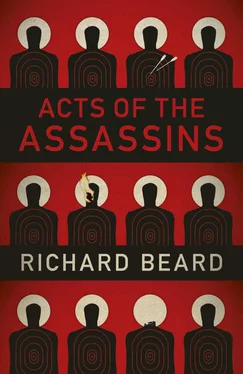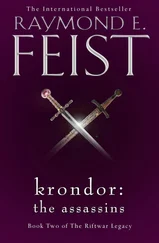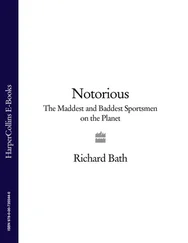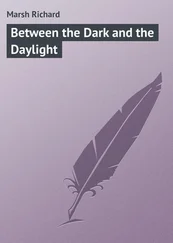‘I appreciate your kindness,’ John said. ‘I’m grateful to you both.’
The tour-boats started as dots on the horizon, the dots became ships, and from the ships came landing-boats heavy with pilgrims in search of John the beloved disciple. Cassius Gallio assured these earnest believers that they were misinformed. John the former disciple of Jesus was last seen in Ephesus. He had been assassinated like the others, yes, equally horribly — boiled in a vat of pagan cooking oil, according to widespread reports.
‘We found a man not far from here who lives in a cave. He says his name is John.’
Gallio insisted the John on the island of Patmos was another John. This John believed in Jesus, true, but he was not the beloved disciple. Not after all this time. And John is a common name. Some of the pilgrims were disheartened, made their excuses and left. Others believed what they wanted to believe, and competed to show their devotion.
‘We too are disciples of Jesus,’ they said. ‘But we are the least of all the disciples.’
The pilgrims shared food and soap and images of Jude impaled by arrows against a verdant pastoral background. Gallio couldn’t begin to explain in how many ways their version of Jude’s death was wrong. They had woodcuts of Simon sawn in half crossways with a manual bow saw, and Bartholomew on a beach carrying his skin in his hands. They believed whatever pleased them, and as disciples the next generation of Christians, and the next, were impostors. No one could replace the original twelve, individually selected by Jesus. The Patmos visitors were aware of this, Gallio thought, because they were unrelenting in their pursuit of John. He could stand in for Jesus. He could pick out a new set of exceptional disciples, who would be only too willing to serve.
In his failure to do this, John of Patmos was a disappointment. He sat in his cave and waited. He waited some more and he continues to wait, until the pilgrims and more recently the professors can’t be sure it’s him. Is the disciple John here? Is Jesus here? The questioners want the comfort of being certain, but to this day Cassius Gallio refuses to compromise. He concedes that both John and Jesus may once have visited Patmos, but neither is here right now.
‘And Satan?’
Gallio despairs, almost, but despair is unproductive so occasionally he’ll throw out a story, disinformation in the tradition of Jesus. A myth hides the man himself from sight, Jesus knows this, and Gallio will freely admit that here on Patmos he once saw, with his own eyes, the disciple John collect an armful of hay from a field. John knelt down in front of the hay and prayed, and the hay was transformed into the purest gold. Yes John did exactly that, here on the island of Patmos. John melted the gold down and minted an armful of golden coins.
‘Then what? What did John do with the money?’
The researchers and academics are desperate to make connections, to speculate, to move on to what a story means and why it matters.
‘He gathered the gold coins together,’ Gallio said, ‘every last one of them, and he hurled them into the sea.’
The taxi drove against the headlamps of construction trucks carrying sand and gravel for the never-ending restoration of the city. Beyond the tourist highways, where no one would think to look, the final lit windows in the glass Siemens building darkened one by one. It was getting late.
The gateway to the Abbey of the Three Fountains was quiet, apart from traffic noise from the flyover, and the daytime trickle of visitors was a memory. In a sweep of full-beam light the taxi U-turned towards the city, leaving Gallio in the dark committed to John and Claudia. He acted as if he belonged, but was grateful for the night’s half-moon that silvered the tree-lined avenue to the Abbey building. He wouldn’t want to die in total darkness. Lamps at ankle level illuminated the path leading to the raised terrace in front of the arched Abbey doorway. At the top of the steps, he could see Valeria waiting.
‘A pathway,’ Gallio said, ‘I’ll guide you along it. At the end of the path we have some steps. Keep hold of my elbow. Don’t be afraid.’
‘Is it the assassin?’
Along with Valeria, up on the Abbey terrace, Cassius Gallio could make out two more figures, dark in the shadow of thick stone walls.
‘Yes,’ he said. ‘All of them are here.’
The disciples have disciples with disciples who over the years become implacable. Cassius Gallio can’t deter them from building their monasteries, from ringing their ecumenical bells. When John hears the faithful called to prayer he hides in his cave, a hollow in the rocks beside the path. The cave has room enough for two but Gallio prefers to wait outside: Jesus will descend from the clouds, according to Jude, and Gallio would like to be the first to know.
As luck would have it, a contour in the rock beside the cave entrance is a perfect fit for the shape of Gallio’s back. That’s where he sits, shaped into the island stone and warmed by daily sunshine. Sometimes, especially if he falls asleep, believers will leave him coins or handwritten messages: Please God, let me find myself in Jesus .
Cassius Gallio is not John’s keeper; that would not be a reasonable position for him to take. More accurately he remains constantly alert to ways in which a beloved disciple could die. Accident, illness, violence. Gallio watches John closely around traffic and water. Strangers have his attention — any of them could be Satan, or a killer from Rome, or both — and Gallio sleeps less well when John catches a cold. He can’t be certain that Jesus will appear, but if Jesus does appear, in the final instant of his beloved disciple’s lifetime, then he’ll find that Cassius Gallio is at hand.
He lives every day as if the world might end, as does John, which is not as exciting as it sounds. Eat, watch for clouds, sit outside the cave. Sleep. Avoid evil, because on Patmos with the monasteries and churches that’s the dominant mood. Despite a memorable episode of food poisoning, and a nasty chest infection, John is healthy and strangers are kind and Gallio wakes to endless sunny days by the sea.
John often complains that life isn’t fair. His brother James — his brother! — was beheaded and went first to sit at the right hand of Jesus in heaven. They killed his brother an age ago in Jerusalem, so the right hand is taken. As is the left hand. Thomas is on the left hand, or possibly Jude, and the two seats outside those are filled by Philip and Bartholomew, and the next places along by Andrew and Matthew and Peter. One disciple after another fast-tracked to paradise, with John left a vacant chair at the distant end of the table.
‘Next to Judas?’
‘Even Judas got there before me.’
John feels abandoned. Of the original twelve disciples, only John is absent from the kingdom.
On the terrace of the Abbey of the Three Fountains, Paul stepped out of the shadows and John embraced him. The short bald man and the blind disciple, solid in each other’s arms, even though by Valeria’s accounting they weren’t supposed to be fond of each other.
‘In your own time,’ Gallio said. ‘Let’s get this done.’
He was impatient, wary of any delay because in the open he felt exposed, out in the light: fat-winged flies bashed into the low-level glass of the lamps. Left, right, above, below. Gallio scrutinised the grounds of the Abbey. If Valeria had called in backup then her hired assassins were behind the hedges, or moving tree to tree. He watched for black to detach from blackness, as evil would, from the dark of the barn or the lodge, shadows with knives, clubs, a pump-action shotgun.
Nothing moved, nobody took aim from the darkness. Or not that he could see.
Читать дальше












